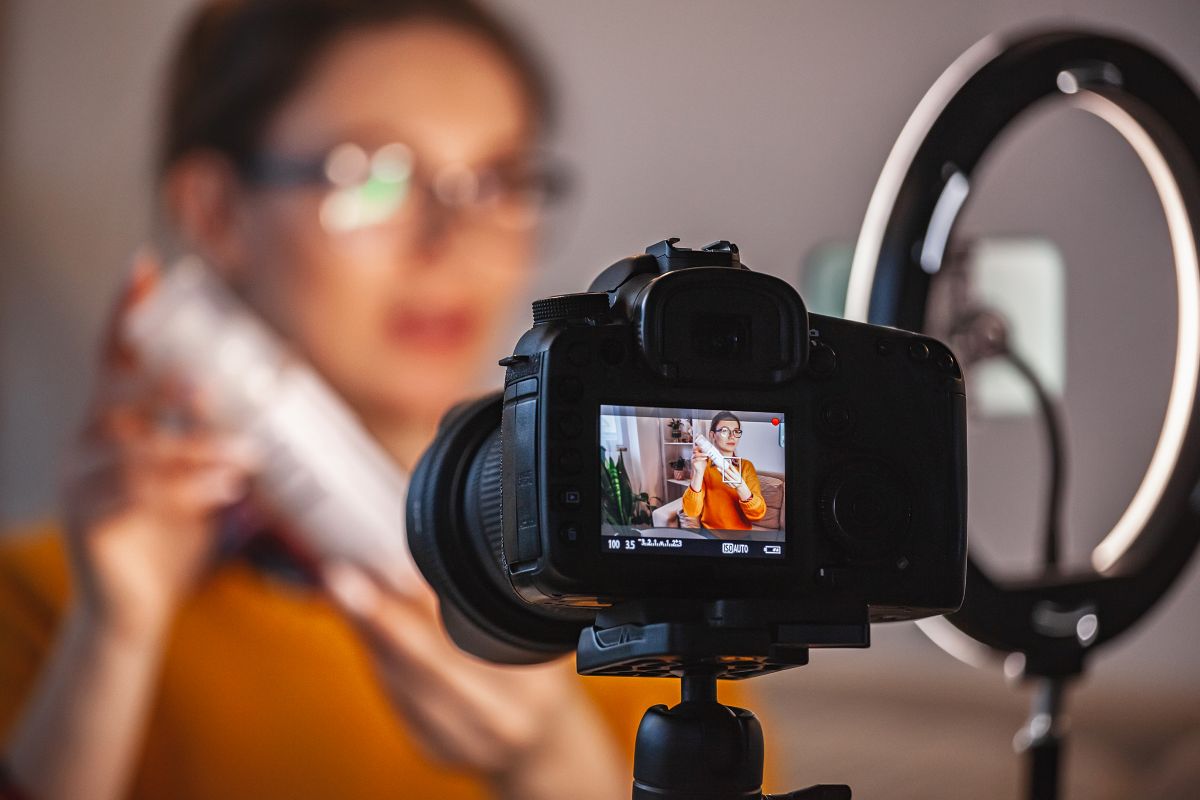
Video Production Companies: What Are Social Media Videos?
Scroll through any social feed today and you will notice one thing — video is everywhere. From short clips to product demos, social media is built around how people watch, react, and share video. But what exactly are social media videos, and why have they become so central to how businesses communicate? Social media videos are not just any videos posted online. They are designed with purpose — to inform, entertain, persuade or connect — all within the fast, noisy environment of platforms like Instagram, TikTok, LinkedIn, and YouTube. Their success depends on strategy, clear messaging, and knowing exactly who is watching. Let’s take a closer look at what makes a video work on social media, the video types brands often use, and how video production companies go about making them
What Are Social Media Videos?
Social media videos are short, targeted video clips made specifically for sharing on social media platforms. Unlike traditional video content that might be long or general, social media videos are designed with the audience and platform in mind. They became popular because people prefer quick, easily digestible content that they can watch on the go, often on mobile devices. There are four main characteristics that define social media videos:
1. Concise and Focused
People often browse social media in short bursts, and different platforms encourage different styles of viewing. On Instagram or TikTok, for example, viewers are usually after quick, visual content they can absorb easily as they scroll. Because of that, social media videos tend to be clear and to the point. They avoid padding and instead focus on delivering a single, focused message that fits the way people typically use the platform.
2. Audience-Centered
Effective social media videos are designed with the viewer in mind. That means understanding what matters to them, their questions, interests, and viewing habits, and shaping the content around those insights. The goal is not just to inform or entertain, but to make the video feel relevant and worthwhile to watch.
3. Platform-Optimised
Each social media platform has its own style and technical requirements. For example, TikTok videos are short and vertical, while YouTube videos can be longer and horizontal. Social media videos must be made to fit these unique formats.
4. Engagement Driven
Each social platform comes with its own technical guidelines and content expectations. A video that works well on YouTube might fall flat on TikTok or Instagram if it is not adapted to suit the platform’s format and viewing patterns. Professional video production companies will shape the video’s length, dimensions, tone, and structure to match where it will be published. This ensures the content feels native, not repurposed, which tends to result in better engagement.
Types of Social Media Videos
There are many types of social media videos, each serving a different purpose. Here are some common ones you will encounter:
1. Explainer Videos
These videos break down a product, service, or idea in a clear and simple way, helping viewers understand something quickly.
2. Entertainment Videos
Funny, creative, or visually interesting clips designed to catch attention and encourage sharing. These are often skits or trend-based videos that reflect what people are already engaging with on social platforms.
3. Animated Videos
Using motion graphics or illustrated characters, animated videos make complex ideas easier to understand. They work well for explaining services or concepts that are difficult to capture with live action.
4. Video Interviews
Featuring customers, staff, or experts, video interviews offer honest opinions and insights. This format helps build trust by putting real faces and genuine conversations in front of your audience.
5. Event Videos
Capturing moments from conferences, launches, or other gatherings, event videos bring viewers closer to the action. They create a sense of involvement and show the business in a dynamic setting.
6. Product Demonstration Videos
Product demos reveal how an item works and its benefits in real time. These videos answer common questions and make it easier for customers to understand the product’s value.
7. Messages from Founders
When founders share updates or stories, it adds a personal touch to the brand. Such videos build connection by showing the people behind the business and their vision.
8. About Us Videos
Providing background on the company’s history and mission, about us videos give context to the brand. This type helps potential customers relate to the business.
Video production companies will select the type of video based on what fits the client’s goals and audience best.
Why Use Social Media Videos for Marketing?
Social media videos have become an important marketing element for several reasons:
- Mobile Audiences Prefer Video
Most people access social media on their phones, where video is more engaging than text or images. - Video Converts Viewers into Customers
Seeing a product or service in action makes viewers more likely to trust and buy. - Ignites Brand Curiosity
Videos catch attention quickly and can make people interested in learning more about a brand. - Videos Tell Your Story
Through images, sound, and motion, videos communicate messages more vividly than text alone. - Videos Are Convincing
They offer proof of a product’s benefits, helping to build confidence in potential buyers.
Video production companies understand these benefits and help brands tap into them by creating videos that suit the audience and platform.
How to Make Social Media Videos?
Producing social media videos is a carefully planned process. Here is how professional video production companies approach it:
1. Define Objectives
They begin by understanding what the video should achieve, whether it is raising awareness, generating leads, or educating customers.
2. Identify Target Audience
Next, they research who the video is for and what kind of content will appeal to them. This includes understanding the audience’s preferences, habits, and the type of videos they engage with most on different platforms.
3. Match Content to Platforms
Different social media platforms have distinct formats and audiences:
- TikTok: Primarily a mobile-first platform known for its short-form videos. While videos can range from 3 seconds to 10 minutes, shorter clips (15–60 seconds) remain the most popular and effective for engagement. The audience is diverse, with a significant portion being Gen Z and millennials.
- YouTube: Supports a wide range of video lengths, from Shorts (up to 60 seconds) to long-form content. The average video length is about 11.7 minutes. The platform caters to various demographics, including a growing number of viewers on smart TVs.
- Instagram: Offers multiple video formats: Reels (up to 3 minutes), Feed videos, Stories, and Live broadcasts. The audience is broad, with a strong presence of millennials and Gen Z.
- Facebook: Allows videos ranging from 1 second to 240 minutes, though shorter videos (15–30 seconds) often perform better. The platform’s audience skews slightly older, with a significant portion being 25–34 years old
4. Choose a Video Style
Next, they decide on the video style—live-action, animation, interviews, or another format—based on what suits the message and audience. The style should fit the brand’s tone and work well on the chosen platform.
5. Concept Development and Scriptwriting
Once the video style is chosen, the creative team develops a clear concept that aligns with the objectives and audience needs. This concept is then turned into a detailed script, outlining dialogue, scenes, and key messages to ensure the video remains focused and delivers its purpose effectively.
6. Storyboarding or Shot List Creation
With the script in hand, the production team maps out the visuals by creating storyboards or detailed shot lists. This planning ensures every scene is clear, making the filming process more efficient and aligned with the video’s goals.
7. Filming
During filming, the crew follows the script and shot list to capture all necessary footage. The production team manages camera work, lighting, and sound to ensure quality. Directors and producers oversee the process to make sure everything aligns with the concept and planned shots.
8. Editing and Post-production
In this stage, the raw footage is trimmed and arranged according to the script and storyboard. Sound elements such as voiceovers, music, and effects are added to support the message. Colour correction and graphic overlays are applied to meet platform specifications and maintain viewer interest.
9. Optimise Videos
Videos are prepared specifically for each social media platform by adjusting resolution, aspect ratio, and file format to meet platform requirements. The length is also fine-tuned to suit audience habits and platform limits. Subtitles, captions, and thumbnails are added to improve accessibility and encourage viewer interaction. These optimisation steps help ensure the video performs well and maintains a professional appearance across all devices.
10. Track Video Performance
Video production companies monitor key metrics such as view count, watch time, engagement rate (likes, comments, shares), and audience retention to understand how well videos perform. They also analyse click-through rates and conversion rates when applicable. These insights help identify what content works best and guide adjustments for future video campaigns to better meet the target audience’s preferences. This systematic approach is what separates professional social media videos from casual ones.
The Bottom Line
When it comes to social media videos, the challenge is not only making something people want to watch but making something that works where they watch it. Video production companies know this well, they shape every detail around who will see it and how they will see it. A well-made video can do what text or images often struggle with: cut through the clutter and give your message a clear, memorable moment.
One thing to remember is that social media is always shifting, and so are the ways people interact with videos. The right video length, style, or format today might need a tweak tomorrow. That means staying aware of these changes is just as important as having a solid plan at the start.
In short, social media videos succeed when they respect the viewer’s time, the platform’s rules, and the brand’s voice, and that balance is where professionals make the difference. As a final thought, think of social media videos not as a single post but as a conversation that evolves. The better you understand the rhythm of that conversation, the better your videos will fit.
Thinking about your next social media video? That’s the kind of timing we like. Sound Idea Digital works with brands to create platform-aware videos that fit their strategy. Let’s talk ideas.
We are a full-service Web Development and Content Production Agency in Gauteng specialising in Video Production, Animation, eLearning Content Development, Learning Management Systems, and Content Production.
Contact us for a quote. | enquiries@soundidea.co.za | https://www.soundideavideoproduction.co.za| +27 82 491 5824 |
More to Explore
If you are looking to build on what you have just read, these articles go into a few specific areas that often come up when planning or creating social media videos. From figuring out how long a video should be, to using POV videos effectively, to finding ways to reuse content without starting from scratch—they offer a bit more detail
Video Production Companies in Johannesburg: Video Length

